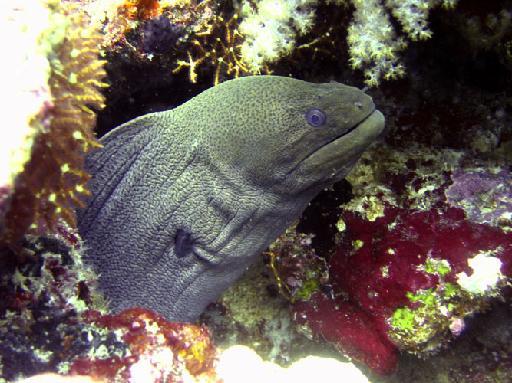The sacred eel Nan Samol was a major figure in ancient Pohnpeian society
In preparation for the Sustainable Conservation Plan at Nan Madol, we are reviewing the ethnography and recorded oral histories associated with the site. The sacred eel, Nan Samol, figures prominently in these narratives and stories about him provide fascinating insights into Nan Madol history and the very design of the ancient settlement. Oral traditions tell us that the Saudeleur Dynasty ruled Pohnpei from c.1200-1500 AD from their seat of power at Nan Madol. In many (but not all) local histories, this dynasty was founded by two brothers who migrated to Pohnpei from an unknown island. They are remembered today as a foreign force that subjugated many fractured clans across the island. Just as many other conquerors have done throughout history, the Saudeleurs claimed that their rule was divinely ordained. Ceremonies were used to convey this to the populace.
Saudeleur priests performed a yearly ceremony of atonement called the Pwung en Sapw. The closing ceremony of the Pwung en Sapw involved the offering of a cooked turtle to the sacred saltwater eel Nan Samol. The acceptance of the offering by Nan Samol was seen as the Saudeleur god, Nahnisohnsapw, endorsing Saudeleur rule over Pohnpei. While many Pohnpeians worshiped the local freshwater eels found throughout the island’s streams, Nan Samol was a thing apart: a large, frightening, moray eel only found out in the open ocean. This aptly symbolized Nan Madol’s ferociousness, dominance, and foreign roots. The offering of a turtle to Nan Samol was significant in several ways. For one, the turtle represented the three political districts called weis, or “turtle” states, that the Saudeleurs divided Pohnpei into. In addition, the ceremony also harkens to the story of Liahnensokole, a turtle who was sacrificed to the Saudeleur eel to save the lives of her sons. In this story the turtle is seen as a symbol for the land the Pohnpeians sacrificed to ensure their survival under the Saudeleur rulers.
Nan Samol is said to have lived under the artificial islet of Idehd, which can be visited today. Archaeologists have in fact found tunnels under Idehd, the nearby islet of Dorong, and the islet of Dau that may have been used to ceremonially house (or attract) the sacred eel during ceremonies. The sacrificial turtles were caught and placed within pools on the islets of Peikapw and Paseid. To see where these islets are located, click on the map below.
References: Hanlon, D. (1988). Upon a Stone Altar: A History of Pohnpei to 1890. University of Hawaii Press, Honolulu.
Peterson, G. (1990). Lost in the Weeds: Theme and Variation in Pohnpei Political Mythology. University of Hawai'i at Manoa, Honolulu.
Thompson, Alderson, and Kataoka (2015). An Inventory of the Islets of Nan Madol. In Nan Madol: A Ceremonial Center of East Micronesia, as Nominated by the Federated States of Micronesia For the Inscription on the World Heritage List.


